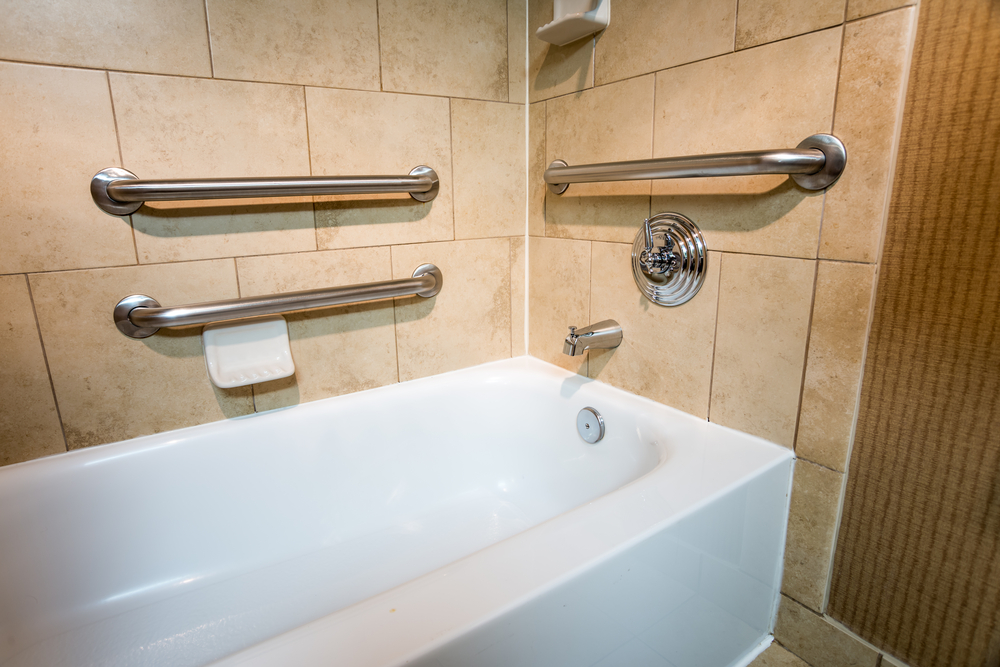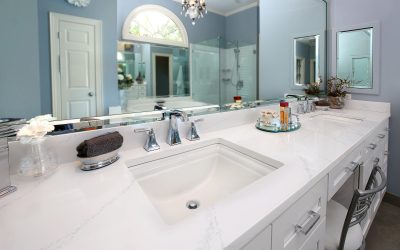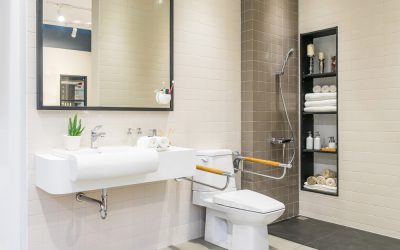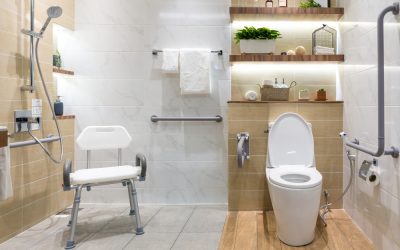According to the ADA, about 17 in 100 Americans are now reported to have a disability. Maybe you or a loved one are part of that statistic. In a world not designed to accommodate the disabled, it can help immensely to have a home ready to fit a handicapped loved one’s needs. A handicap-accessible bathroom design in particular can help your loved one maintain their dignity and care for themselves in comfort.
Millions of Americans require a handicap-accessible restroom. Do you or a loved one need special accommodations? Here’s how to remodel your bathroom accordingly. Share on X
Designing a Handicap-Accessible Bathroom
People feel particularly vulnerable in the restroom. This is doubly true if a handicap prevents someone from easily using the bathroom features to care for themselves. Designing a specially made handicap-accessible restroom can make a huge difference. As you prepare to remodel your bathroom, you should generally expect the process to follow these steps:
- Research handicap accessibility
- Choose a contractor
- Plan your bathroom
1) Research Handicap Accessibility
The ADA legally requires businesses to provide accommodations for those who need them. Even though a homeowner doesn’t have to adhere to ADA regulations, the guidelines are still an excellent resource for anyone who isn’t quite sure what handicap accessibility looks like. You can also consider common designs seen in public places: handrails, support bars, wider floor space to fit a wheelchair, and so forth. What can you adapt to your own bathroom?
Pro Tip: Don’t cut corners on adapting your bathroom for handicap accessibility. You want the person who requires it to be able to use the restroom in comfort and privacy.
2) Choose a Contractor
Before you decide to hire a particular contractor, talk to them about handicap accessibility and ask if they’ve ever done special accommodations work before. If so, ask for pictures. Make sure that the contractor understands handicap-accessible designs and how important they are.
3) Plan Your Bathroom
Based on your ADA research and conversations with your contractor, decide what your new bathroom will look like. Make sure to consider every feature for potentially necessary changes. For instance, if a wheelchair user will be using this bathroom, ask about additional floor space or a walk-in tub. Add or change as many features as necessary to make your new bathroom as handicap-accessible as possible.
Providing an Easily Accessible Bathroom
Remodeling your bathroom for handicap accommodations in no way decreases its functionality. If anything, your home has gained a valuable feature. Not only will it meet an immediate need, but future homeowners will appreciate the care put into the design as well. Your new restroom will serve a good purpose.
Want to see how we can help you design an ADA-compliant bathroom for your home? Connect with us to see pictures of our past work and talk with our designers.







